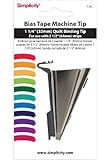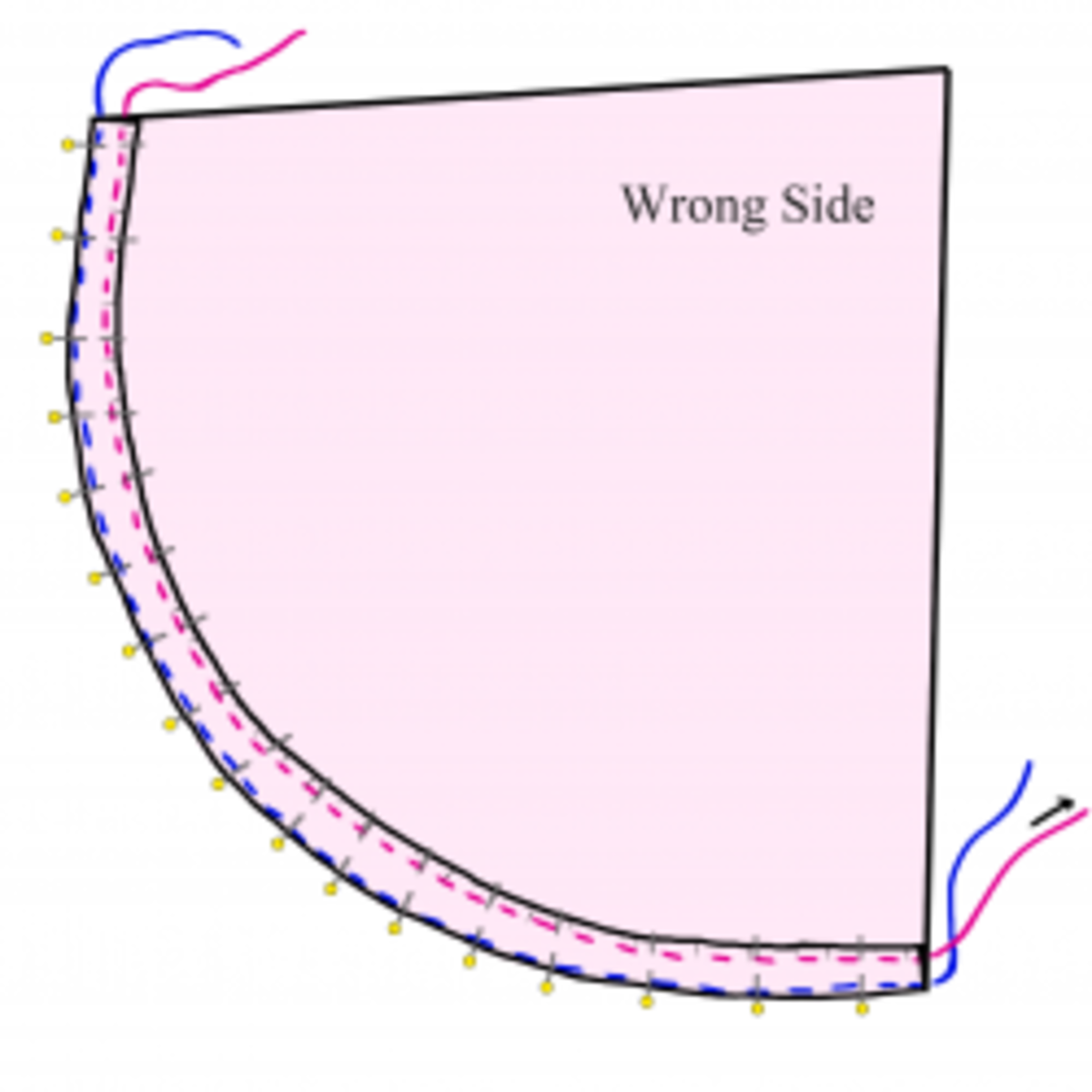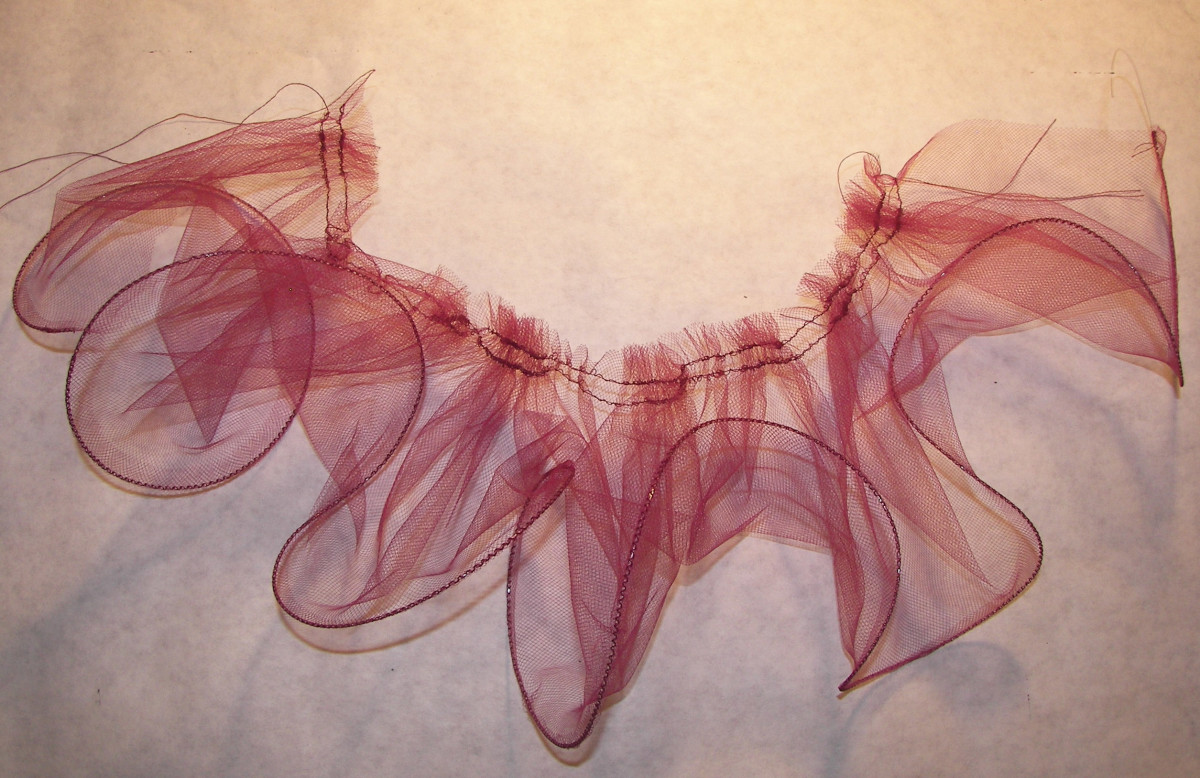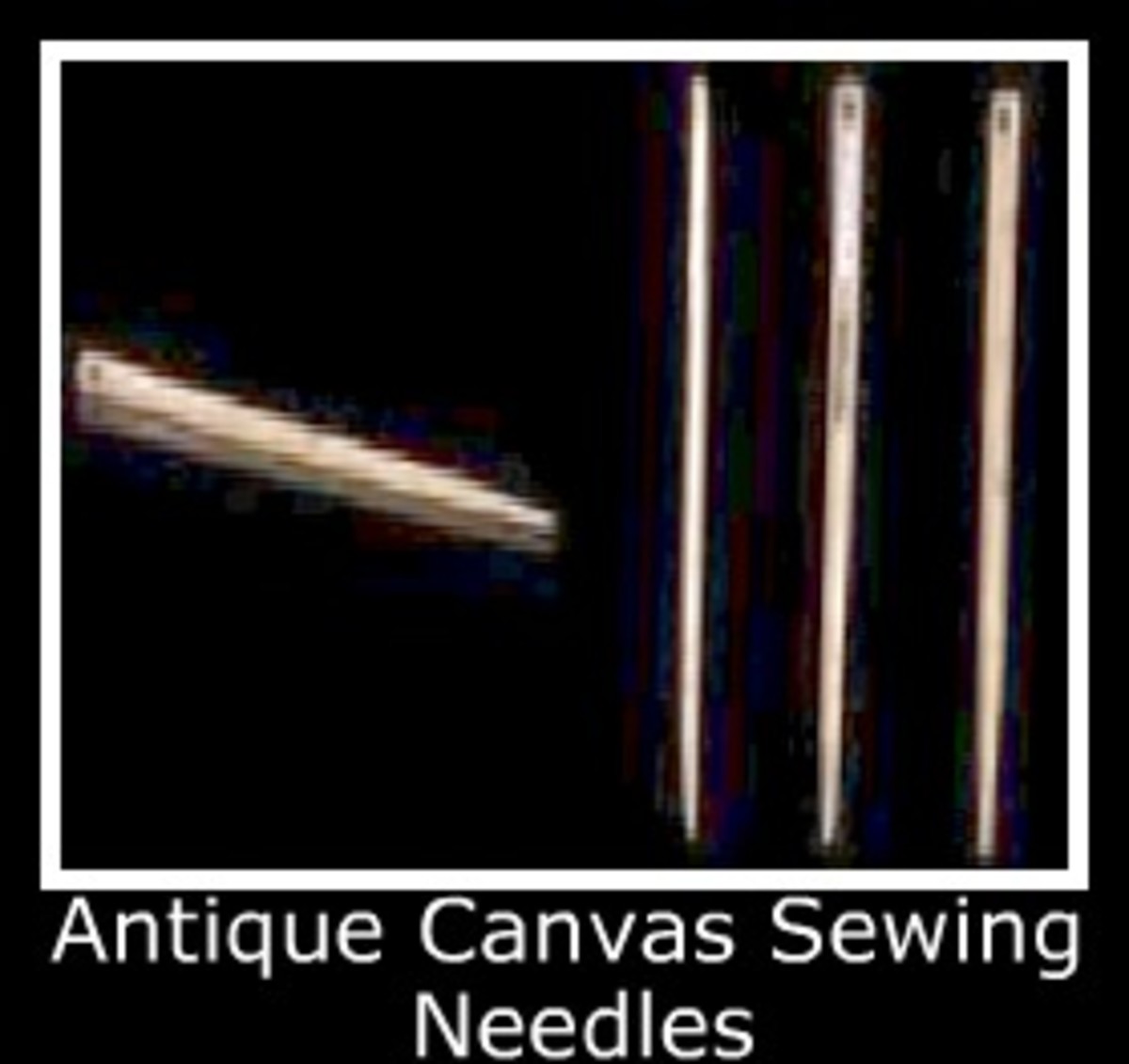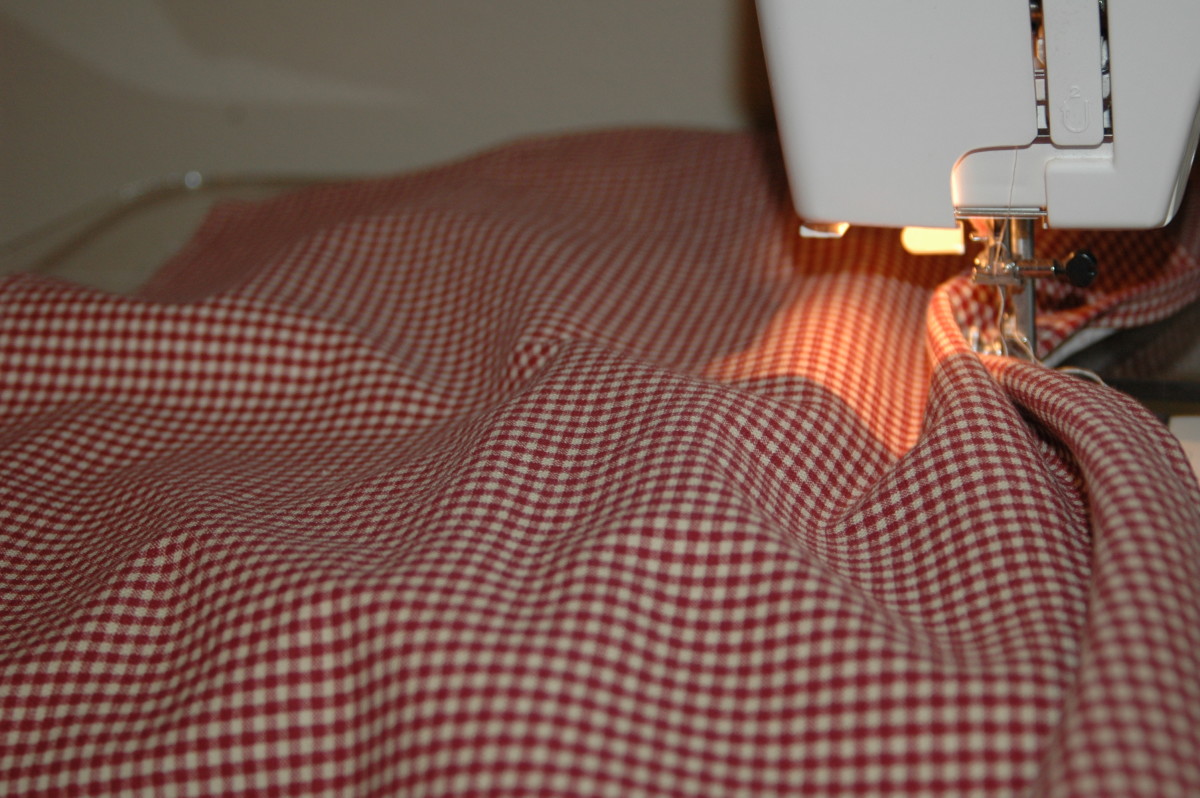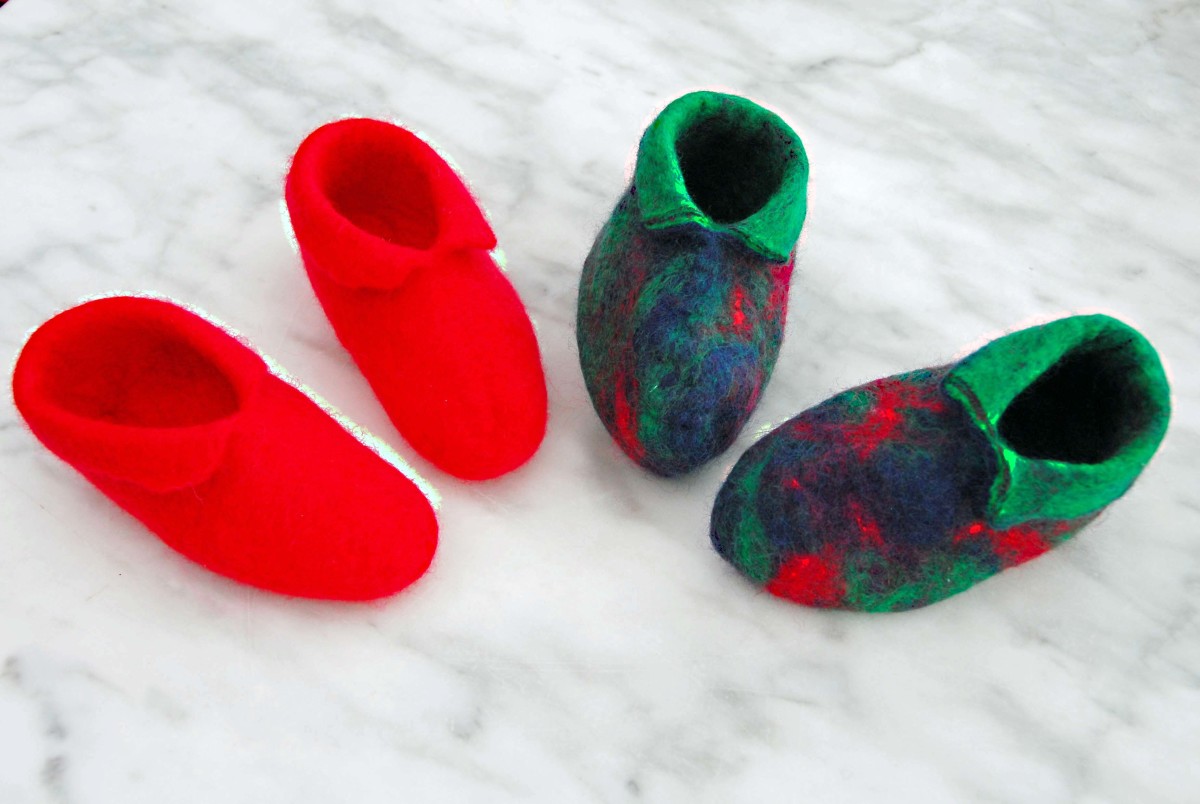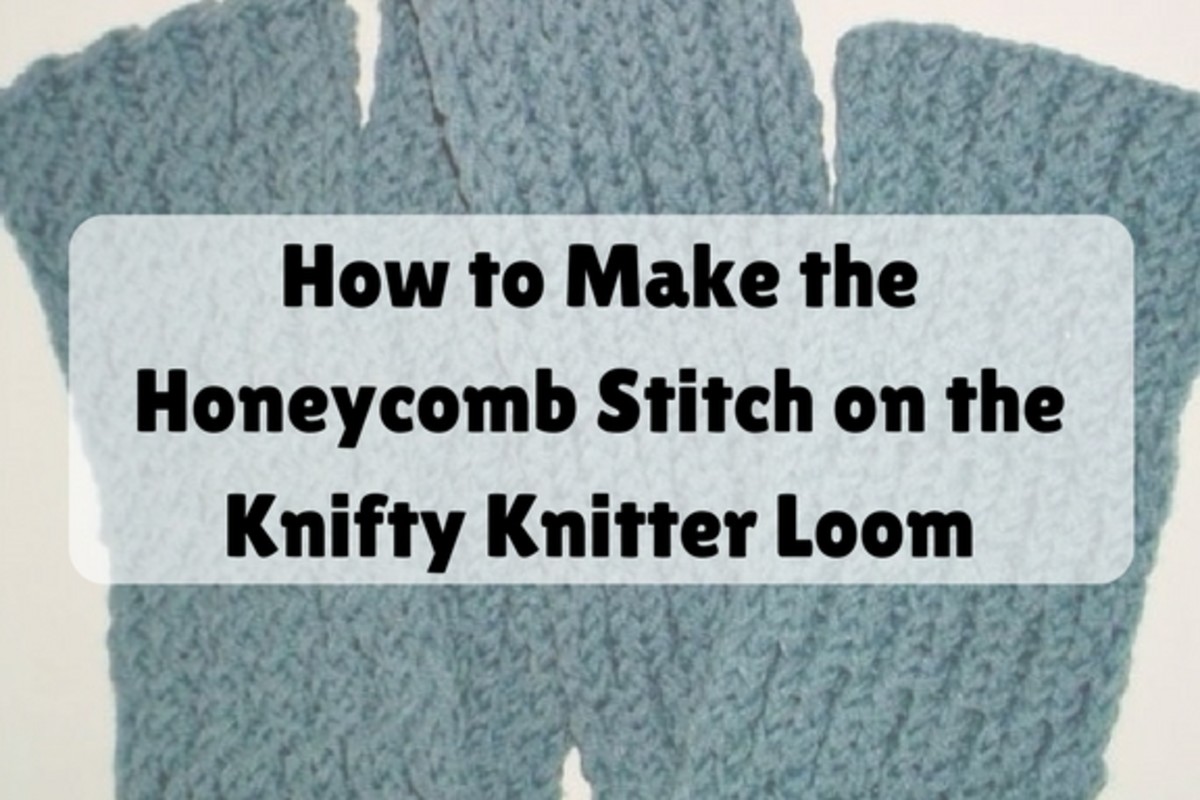My Favourite Sewing Gadget - A Bias Tape Maker
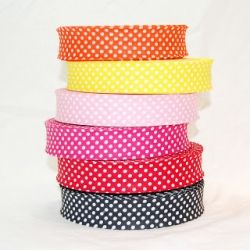
What is bias tape and why do I need it?
Bias tape (AKA bias binding) is simply a narrow, folded strip of fabric.
It gets the name 'bias' because it has been cut 'on the bias'. If you take a piece of fabric you can feel where the bias is by trying to stretch it. If you're not pulling it on the bias, it won't stretch at all - but try stretching it on the diagonal and you'll feel it 'give'. Cutting the narrow strips of fabric 'on the bias' means that it will go around corners easily. The width of the binding can be varied, depending on what you are using it for.
Make Bias Tape To Enhance Your Sewing Project
Bias tape / binding is incredibly useful for making a tidy edge. However, it can also become a hugely important decorative feature of whatever you are making. It can look amazing on the edge of a quilt, place mat or potholder.
If you use it on the armholes and neck edge of a dress it can really enhance the garment.
Whatever you're making, you can choose to make your own binding of the same fabric for a matching look or choose something completely different to contrast with the main fabric. You can achieve very interesting looks with binding. For example, if you were making a sleeveless dress from white fabric with black polka dots, why not edge the armholes and neck with your own binding made from black fabric with white polka dots.
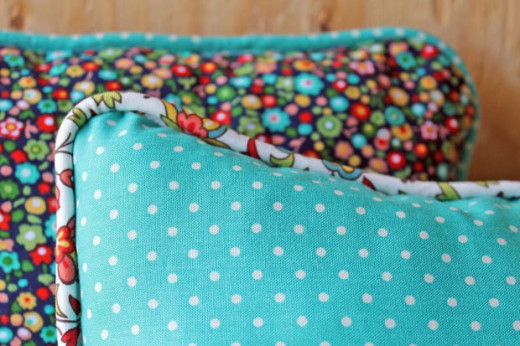
People are often put off using bias binding, which is a shame because it is such a useful item. Price is often a factor. If you want to use it for a large project like edging a quilt, it could become quite pricey to buy the amount you need. Although more designs are available nowadays, you may not find exactly what you want. So make your own!
Bought bias tape often has a high proportion of polyester, which doesn't always give the finish you want. So make your own!
Making your own binding is a lot less expensive, you can make it with whatever fabric you choose and it gives you complete freedom to choose a co-ordinating, matching or contrasting fabric for your edging.
Little wonder, then, that my favourite gadget is a bias tape maker. Read on to find out more...
This is the one I love - I have the whole set!
The best ideas are often the most simple. This wonderful little gadget from Clover is a great example of that.
When I first came across it while surfing Amazon (as you do...) I couldn't decide which size would suit me best. Then I saw how inexpensive they were and decided to buy one in each size.
You can choose from a quarter inch, half inch, three quarters of an inch, one inch and two inch widths.
Just bear in mind that the size of the finished bias tape will be one-half of the size of the bias tape maker. This is because you'll fold the binding in half again when you sew it to your project.
So the three quarter inch bias tape maker will make a three eights of an inch bias strip.
If you just want to try it out, the three quarter inch tape maker is suitable for most projects.
How to cut fabric to use in the bias tape maker
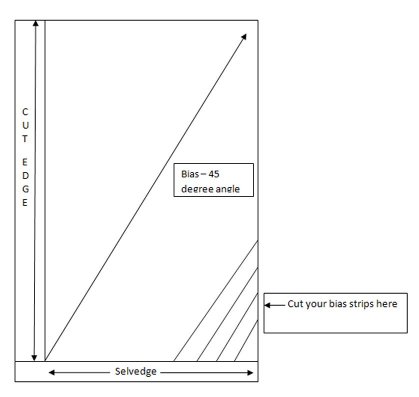
I've created a diagram to show you how to cut your bias strips.
To make bias tape, first measure the length of the edges of the item that you intend to trim with binding.
Then cut lengths of fabric, on the bias remembering to add a little for joining the strips together.
It's best to cut the ends of each strip of fabric at a 45 degree angle. This means that when you stitch them together, the finished strip will still retain the 'stretchiness' of the bias cut.
How wide should I cut the strips?

Now - to be perfectly honest, I have tried to describe this - in words - several times, and got myself in a mess. So to make life a lot easier for all of us, I have created a handy chart so that you can see at a glance how wide to cut your strips.
Joining your strips
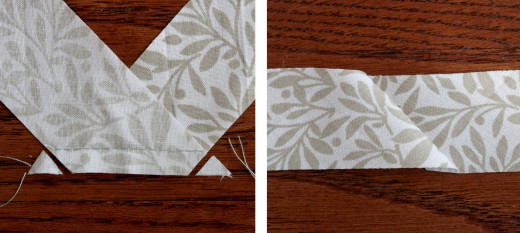
You can see in the picture that the ends of the fabric have been cut at a 45 degree angle. With right sides together, sew to join. Now take it to your ironing board and press the seam open. You'll see why later...
Now you get to use your new toy!
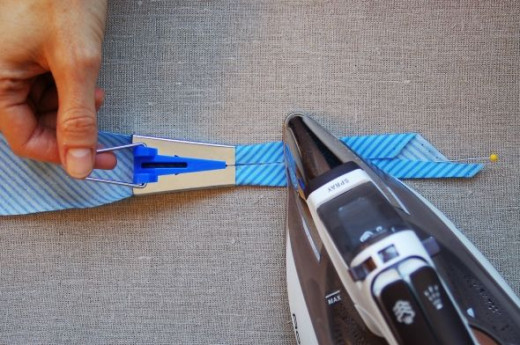
The good news is that you've now completed the most labour intensive part of creating your very own bias tape.
Now comes the fun part. Take one end of your strip of fabric and feed it into the wide end of the bias tape maker. To make this easier, the manufacturers have created a small groove down the centre of the little machine. This means that you can slide a pin in to pick up the fabric and give it a helpful tug if it's not sliding easily.
Just keep gently pulling the fabric through and you will see it coming out of the other end, neatly and beautifully folded into bona fide bias tape!
To make this even easier, I like to work on an ironing board. I always have my ironing board up when I'm sewing anyway, for flattening seams and keeping everything nicely smooth. So...as the fabric starts to feed out, all nicely folded, simply take a pin (a glass headed one is best, so that you can see it easily) and pin the fabric to the ironing board cover.
Anchoring the fabric this way give you more control over the fabric. Once you have pulled through a reasonable length, unpin the folded fabric and slide your iron over it to give crisp edges to your bias tape. Then simply repin it, just before where you finished ironing and carry on.
With practice, you'll be able to pull and iron quite smoothly. When you reach a sewn joint, you may have to give it a gentle tug to get it through smoothly. This is where ironing your seam joins open will pay off! They'll be less bulky and easier to pull through.
Other bias tape makers are available!
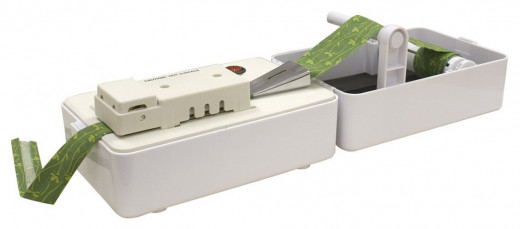
The picture above shows you the Simplicity Bias Tape Machine in action. If you make a lot of bias tape then this is the puppy for you. It has a built-in iron so you just plug it in and feed in your fabric.
You can set the automatic iron to a variety of heats to suit whichever fabric you're using.
You can also get different sized tips for this Machine - we've listed a couple below to help you out.
Simplicity Bias Tape Machine
The machine below automatically shuts off after ten minutes of not being used. This is a great feature...if, like me, you go to answer the phone and forget you left the iron on...oops!
Simplicity 1 - 1/4" Quilt Binding Tip
If you love making quilts - then this is the one for you. Quilts have a LOT of edge and that's a lot of tape to make. You really don't want to be buying tape - too expensive and the choice is restricted...making your own will create the perfect finishing touch.
Simplicity 1/2" Single Fold Bias Tape Machine Tip
Another tip for crafting - this one would be great for use on smaller, more delicate items.
Make bias tape with your sewing machine
If you're not fond of hand sewing, just fix this baby onto your sewing machine and you're good to go.
What can I use Bias Tape on?
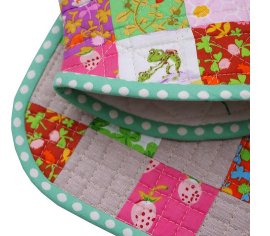
Once you are able to make your own bias tape, the design possibilities are endless.
Now - you can bind edges with the same material for a co-ordinated look.
Or, you can find a fabric that matches in tone but not design to show off an edge and to enhance your project. See how the binding on this potholder and glove really make the patchwork colours pop!
Trim a dress
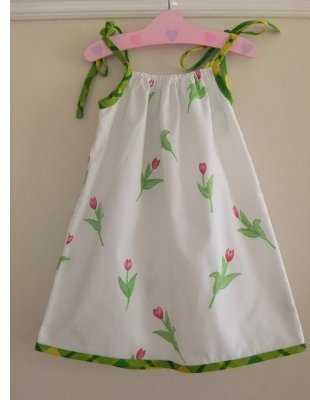
This little girls' dress was very cute to start with but see how the addition of bias tape has given it a professional finish and added to the simple design. The light, fresh green really sets off the flowers on the fabric of the dress.
Another clever feature is how the dressmaker has used the binding. It's been continued on up over the shoulders to create ties over the shoulders.
This method has many uses. You could bind a potholder and then continue the binding on into a little loop for hanging. It would look great on a simple tea towel, again with a hanging loop fashioned from the binding.
Bath towels can be enhanced too - but rather than binding all the way around the edges, run the tape along either end of the towel.
Give it a try...
If you're already a fan of bias binding you'll know how versatile and effective it is. If you've never used it, start small with a potholder or childs' dress.
Just be warned...it can be addictive!


